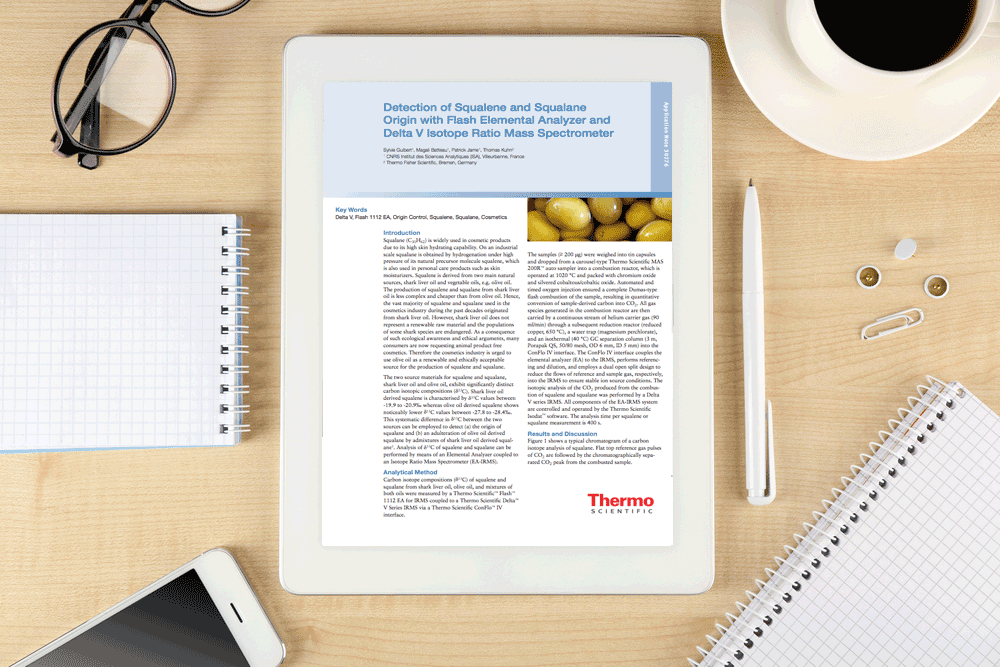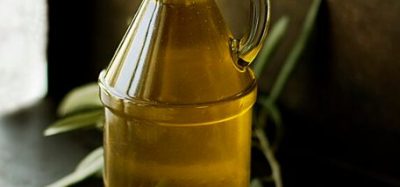App note: Detection of squalene and squalane origin with flash elemental analyser and delta V isotope ratio mass spectrometer
- Like
- Digg
- Del
- Tumblr
- VKontakte
- Buffer
- Love This
- Odnoklassniki
- Meneame
- Blogger
- Amazon
- Yahoo Mail
- Gmail
- AOL
- Newsvine
- HackerNews
- Evernote
- MySpace
- Mail.ru
- Viadeo
- Line
- Comments
- Yummly
- SMS
- Viber
- Telegram
- Subscribe
- Skype
- Facebook Messenger
- Kakao
- LiveJournal
- Yammer
- Edgar
- Fintel
- Mix
- Instapaper
- Copy Link
Posted: 22 February 2017 | Thermo Fisher Scientific | No comments yet
This application note assesses the chemical differences between squalane from shark liver oil and squalane from olive oil, and how the differences can detect origin and adulteration…
Squalane (C30H62) is widely used in cosmetic products due to its high skin hydrating capability. On an industrial scale squalane is obtained by hydrogenation under high pressure of its natural precursor molecule squalene, which is also used in personal care products such as skin moisturisers.
Squalene is derived from two main natural sources, shark liver oil and vegetable oils, e.g. olive oil. The production of squalene and squalane from shark liver oil is less complex and cheaper than from olive oil. Hence, the vast majority of squalene and squalane used in the cosmetics industry during the past decades originated from shark liver oil. However, shark liver oil does not represent a renewable raw material and the populations of some shark species are endangered. As a consequence of such ecological awareness and ethical arguments, many consumers are now requesting animal product free cosmetics. Therefore the cosmetics industry is urged to use olive oil as a renewable and ethically acceptable source for the production of squalene and squalane.
The two source materials for squalene and squalane, shark liver oil and olive oil, exhibit significantly distinct carbon isotopic compositions (δ13C). Shark liver oil derived squalene is characterised by δ13C values between -19.9 to -20.9‰, whereas olive oil derived squalene shows noticeably lower δ13C values between -27.8 to -28.4‰. This systematic difference in δ13C between the two sources can be employed to detect (a) the origin of squalane and (b) an adulteration of olive oil derived squalane by admixtures of shark liver oil derived squalane. Analysis of δ13C of squalene and squalane can be performed by means of an Elemental Analyser coupled to an Isotope Ratio Mass Spectrometer (EA-IRMS).









